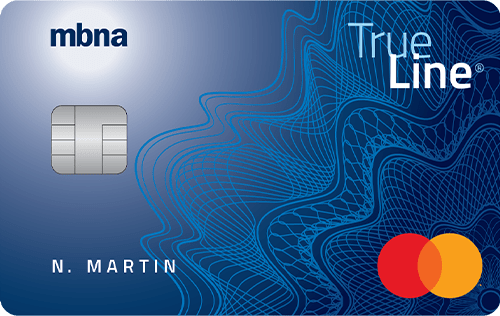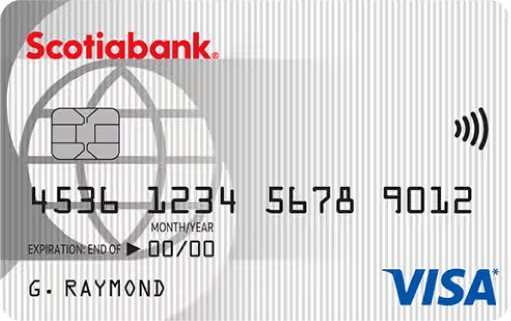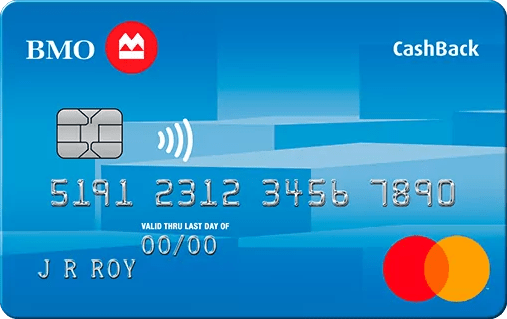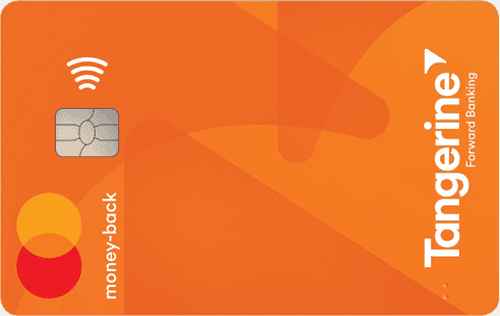Best balance transfer credit cards in Canada for 2024
Fact Checked: Scott Birke
Updated: May 01, 2024
Balance transfer credit cards allow you to transfer and merge debts onto a new, low interest credit card to save money. They give you with a low interest rate or interest-free way to pay off your debt and re-start your financial life.
According to Statistics Canada1, Canadian household credit card debt increased by 7.49% from June 2023 to December 2023. If you find yourself in a similar situation, here's Money.ca's list of the best balance transfer credit cards in Canada.
Best balance transfer credit card in Canada
MBNA True Line Mastercard
0% New cardholders can enjoy a 0% promotional annual interest rate† (a 3% transfer fee applies) for 12 months on any balance transfer✪ completed within 90 days of opening the account
$0 Annual Fee
12.99% Purchase APR
24.99% Cash Advance APR
12.99% Balance Transfer Rate
Good Recommended Credit Score
Welcome Offer Ends Dec 31, 2024
Get a 0% promotional annual interest rate (“AIR”)† for 12 months on balance transfers✪ completed within 90 days of account opening.
Learn moreBest Scotiabank balance transfer card
Scotiabank® Value Visa* Card
$29 Annual Fee $0.00 each Supplementary Card
12.99% Purchase APR
12.99% Cash Advance APR
12.99% Balance Transfer Rate
2.50% Foreign Transaction Fee
Fair Recommended Credit Score
$0 Required Annual Personal Income
$0 Required Annual Household Income
Welcome Offer Ends Oct 31, 2024
0% introductory interest rate on balance transfers for the first 10 months (12.99% after that; annual fee $29), plus no annual fee for the first year.¹
Learn moreBest balance transfer credit card for cash back
BMO CashBack Mastercard
3% Cardholders earn 3% (up to a monthly max of $500) cash back on groceries
1% Cardholders can earn 1% (up to $500 per month) on any recurring bill payments*
0.5% Cardholders can earn 0.5% (no monthly max) on all other eligible purchases*
$0 Annual Fee
20.99% Purchase APR
22.99% Cash Advance APR 21.99% for Quebec residents
Good Recommended Credit Score
$15,000 Required Annual Personal Income
Best balance transfer credit card for rewards
Tangerine Money-Back Credit Card
2% Earn 2% cash back on 2 categories of your choice (e.g. groceries, recurring bills, gas, drug stores, etc.)
3 Get a Tangerine Savings account and add a 3rd 2% cash back category.
0.5% Earn 0.50% on all your other everyday purchases.
$0 Annual Fee $0 for additional cardholders
19.95% Purchase APR
19.95% Cash Advance APR $3.50 within Canada, $5.00 outside Canada
1.95% Balance Transfer Rate 1.95% interest for first 6 months, 19.95% after that.
3.00% Balance Transfer Fee 3.00% of the amount transferred, or minimum of $5.00
2.50% Foreign Transaction Fee
Fair Recommended Credit Score
$12,000 Required Annual Personal Income
Best CIBC balance transfer card: CIBC Select Visa
CIBC Select Visa Card
0% Pay 0% interest for up to 10 months with a 1% transfer fee.†
$29 Annual Fee First year annual fee rebate. $0 for up to 3 additional cards.†
13.99% Purchase APR
13.99% Cash Advance APR
13.99% Balance Transfer Rate Promotional offer: 0% interest for up to 10 months with a 1% transfer fee†
1.00% Balance Transfer Fee 1% transfer fee†
Good Recommended Credit Score
$15,000 Required Annual Household Income
Welcome Offer
Transfer your credit card balance - Get 0% interest for up to 10 months with a 1% transfer fee† and a first year annual fee rebate†
Learn moreHow much can you save with a balance transfer credit card?
Balance transfer credit cards are an easy way to save hundreds of dollars in interest charges as you pay off a debt.
Let’s say, for example, you owe $3,000 on a department store credit card at 19.99% interest. You decide to finally get serious about paying it off by transferring the debt to the CIBC Select Visa* Card and allocating $505 each month to repaying it. In that scenario you would manage to get rid of the debt within a 6-month period, paying nothing in interest charges and only $30 for the balance transfer fee. But if you had stuck with the department store credit card it would have taken you seven months to pay off with a $505 monthly payment, and you’d have paid about $186 in interest over the course of the repayment period. Doing the balance transfer would have saved you $156.
By doing nothing more than applying for a different credit card and taking advantage of their promotional rate you’ve saved yourself $156 — and of course, the bigger the balance the bigger the savings.
While a balance transfer promotion is typically used for the transfer and consolidation of credit card debt, your card issuer might also allow you to transfer balances from loans or lines of credit, giving you more savings options. Be sure to check with your issuer if that’s something you’re seeking.
It’s also worth noting that card issuers typically do not allow balance transfers to earn rewards points or cash back, so don’t calculate that into your anticipated savings. There are, however, some cards that offer both a low-interest balance transfer promotion and the chance to earn cash back or rewards points on regular purchases.
How to choose the best balance transfer card
Before choosing a balance transfer credit card take your time to shop around and make sure you pick the right one for your financial situation. Read reviews, check rates and promotions, and calculate exactly how much you can save in interest and fees while responsibly repaying your debt. And don’t forget to read the fine print — not all balances can be transferred from one institution to the next.
Consider the promotional balance transfer rate
The whole point of getting a balance transfer credit card is to minimize the carrying cost of your debt, so the lower the interest rate the better.
Credit card balance transfer promotion length
The ultimate goal is to pay off all your transferred debt at your new balance transfer card’s low promotional interest rate. The special rate usually lasts between six and nine months, but occasionally a card will offer a deal for 10 months or longer.
Among all the balance transfer-related questions we get at Money.ca, about 40% of them are cardholders asking how they should go about either extending the promotional period on their card or re-transferring their balance to another card with another promotion. Six months might sound like plenty of time to pay off a balance, but it can fly by faster than you expect, so opt for the longest promotional period available. The longer the promotion length, the more time you have to pay off your debt once and for all.
If your balance transfer promotion is ending before you’ve paid off all your transferred debt, you can try to ‘surf’ your balance to another balance transfer card. But remember, there are a limited number of balance transfer deals in Canada, and it’s never guaranteed that another card issuer will accept your application. It’s best to maximize the first balance transfer promotion you get and pay off as much of your debt as you can during that period.
Post-promotional balance transfer interest rate
Some cards, like the Scotiabank Value® Visa* Card, still have relatively low rates even after their balance transfer promotional period ends. Other cards immediately bump the interest rate up to 19.99% or higher, which can be financially detrimental if you haven’t yet paid off the balance.
Check and check again if the interest rate after the promotional term ends will be applied to only the remaining balance after the promotional period, or if it will be retroactively calculated on the amount owing for the entire time you’ve had the card.
Credit card balance transfer fee
Most balance transfer cards charge a one-time balance transfer fee, typically between 1% to 3% per transferred balance. In most cases, the cost of the transfer fee will be added to your balance. For example, if you transfer $4,000 of credit card debt and are charged a 1% balance transfer fee you will be charged $40 and your new transferred balance will appear as $4,040 on your card.
Eligibility criteria and card issuer
The balance transfer card you have your eye on might require a minimum annual income, decent credit score, and a credit standing free of current bankruptcies or consumer proposals. Furthermore, the card issuer likely will not allow you to transfer a balance from one of its own credit cards, or the credit cards of its subsidiaries.
Related: The ultimate guide to credit scores
For instance, Tangerine is owned by Scotiabank and may therefore not allow the transfer of a debt owed to its parent company. Check with the bank before applying if you’re concerned that you might not qualify for a card or that the debt may be ineligible for transfer.
Impartial reviews
Before making a final decision about a balance transfer card take the time to read an in-depth review of the card to make sure there are no potential snags or fine print details that might surprise you later on.
Best credit card for balance transfer in Canada: Our list
How to complete a balance transfer with a credit card
The process of executing a balance transfer will generally be similar from one card issuer to the next and should more or less follow the sequence below:
- 1.
Apply for a balance transfer credit card using one of the links listed earlier in this article.
- 2.
When filling out your card application you will indicate which creditors you want to pay, how much you want to pay to them, and the account numbers for the debts you'd like transferred
- 3.
Once you've approved for the balance transfer credit card, the credit card company will contact your creditors on your behalf and pay them the amount you indicated. It can take from two to four weeks for this process to be completed.
- 4.
Continue to make any required minimum payments on your debts during the transition process to avoid late fees.
- 5.
Make all balance transfers within the card's allotted window for the promotion. This window varies from one card to the next, but it's typically within three months of opening the account. The amount eligible for transfer also varies from one card to the next. For some cards the maximum transfer amount will match the card's credit limit; for other cards the maximum transfer amount might be 50% of the card's credit limit. If you have multiple sources of debt and their combined total exceeds the amount you're allowed to transfer onto the new card then prioritize transferring the debts that have the highest interest rate.
- 6.
Be meticulous about making at least the minimum payment each month for the new card well in advance of its due date. Missing a payment during the promotional period can result in the bank increasing your promotional interest rate dramatically — potentially to 20% or more. Consider automating your minimum payments, so you'll never, ever be late.
- 7.
Create a personal budget that will allow you to not only make the minimum payment on your new credit card but to also capitalize on the low interest balance transfer period and pay as much of your transferred balance off as possible before the interest rates go back up.
Beware new purchases. Balance transfer credit cards only give you a low interest rate on your transferred balances, whereas new purchases made with the card will likely be subject to a much higher rate. If you intend to make new purchases with your credit card in addition to carrying a balance then either make sure the card you select also has a relatively low purchase interest rate or close the card once the balance is paid off and open a different low interest rate credit card. See our list of the best low interest credit cards for some options.
Will a balance transfer hurt my credit score?
Yes and no. Most credit card applications, including applications for balance transfer cards, will result in a hard credit check. Hard credit checks can bump your credit score down a bit, so it’s not recommended to apply for a lot of different credit cards in a short period of time.
That said, getting a balance transfer card can also boost your credit score, because it increases your available credit and improves your credit utilization ratio. And steady repayment of a transferred balance will reflect well on your credit report over time.
Related: Does checking your credit score hurt your credit?
Balance transfer vs. personal loans
Not everyone is eligible for a balance transfer credit card. Banks and other financial institutions offer personal loans to those looking to consolidate and pay down their debt from almost any source. They front you the money so you can pay off your creditors. You can then focus on paying down the personal loan over several years at a stable fixed or variable rate. Other lenders offer extremely high, predatory rates to those who have a hard time accessing credit, so read the fine print.
Related: Best personal loans in Canada
The decision to take out a balance transfer versus a personal loan depends mostly on what you qualify for, what interest rate you can get, and how much debt you need to consolidate. Read our full article on balance transfers vs. personal loans to determine which is right for you.
What to avoid when doing a balance transfer with a credit card
Proportional payment allocation
When you make a credit card payment, your credit card issuer has a choice of how it can allocate your payment among the various balances on your card. For example, on one card you may have a balance of 0% from a balance transfer, 19.9% from a purchase and 24% from a cash advance.
Your credit card issuer can then choose to allocate your payment to your highest interest rate balance (the 24% cash advance), to your lowest interest rate balance (0%), or proportionately based on the size of each rate’s balance. Each methodology has different cost implications for you, the cardholder.
If it pays off the 0% interest balance, you'll owe less on principle, but still accrue a lot of interest on your 24% cash advance.
In general, in Canada, if your credit card account consists of balances with different interest rates, such as purchases at the standard interest rate and cash advances at an introductory or promotional interest rate (e.g., a special lower rate balance transfer or a temporary lower rate on all cash advances), any payment that exceeds the minimum payment due will be allocated to those balances in a proportionate manner.
Your payment will not be applied to the balance of your choice, such as the balance with the highest interest rate. For example, if your balance from purchases at the standard rate is $700 and you have a balance from a cash advance of $300 at a 0% promotional interest rate, proportionate allocation means that 70% of your payment will be allocated to your purchase balance and 30% will be allocated to your cash advance balance.
Of course, you would rather 100% of your payment be applied against the balance with the higher interest rate, so that the balance declines faster, paying less interest, costing you less.
With proportional allocation, the only way for you to get rid of your high interest balance is to pay down your low interest balance completely. However, if your low interest balance is high, which most promotional rate balance transfers typically are, your high interest balance will be “conserved” as the banks call it, until your low interest balance is paid off.
The more low interest balance you put on the card, the longer the high interest balance lasts. It’s counter intuitive, but that’s how it works. The good news is, it’s really easy to avoid.
How do you pay down your highest-interest balance first with a credit card?
The answer is actually pretty simple: Use one card for balance transfers only, and another low interest credit card for purchases only. (See our list of the best low interest credit cards for some card options.) You then determine how much of one balance you want to pay down versus the other, allocating the payments to each card yourself.
When is it the right move to apply for a balance transfer credit card?
The main reason to consider a balance transfer option is when you’re carrying debt on one or more credit cards with a higher interest rate and you want to pay it off. As long as you’re moving your balance owing from one credit card to another one with a lower interest rate, you’re making a smart choice and could save hundreds, if not thousands, of dollars (depending on the amount of debt you’re carrying). Though I will add one caveat: a transfer is only a wise choice so long as you pay off or significantly pay down your transferred balance during the promotional period.
When should you stay away?
A balance transfer only works if you’re going to be diligent about paying off the outstanding credit card debt. Therefore, a balance transfer is not right for you if you have no strategy to increase your payments or combat reckless spending habits to ensure your debt doesn’t just keep piling up.
Read: How to pay off credit cards quickly and cheaply
Furthermore, you should stay away from a balance transfer if the breathing room it affords you to pay down your debt will actually encourage you to spend more. For some consumers, a low interest rate can unfortunately encourage them to charge more to their credit cards because their debt feels more manageable.
Things to consider with balance transfer credit cards
Your credit rating
While a balance transfer is almost always a good idea for consumers with credit card debt, there are some additional points to consider before you make a move. To be eligible for a balance transfer you’ll have to apply for a new credit card with a balance transfer promotion. Many credit cards in Canada require a specific minimum credit score, so be sure to check what score is needed before you apply. (Read our ultimate guide to credit scores to learn how to find and read your score.)
If your score is not high enough, you may want to check out whether there are any low interest credit cards you may be eligible for.
Read: Best low interest credit cards in Canada
The balance transfer fee
Another consideration is the transfer fee. Most credit cards charge a balance transfer fee of up to 3.99% of the amount you want to transfer. It’s important to be aware of this fee (which will be added to your overall amount owing) and ensure you are serious about paying off your transferred amount before you incur more debt.
If you have a good credit score and thus have the luxury of being picky, you may want to compare balance offers between cards to see if there is an option that doesn’t charge a transfer fee.
The promotional period
Promo periods vary and generally speaking, the longer the better. Credit card companies usually won’t let you extend the period, so make sure you can pay down the debt in the prescribed time.
The post-promotional period
Your new low interest rate only applies to the debt you transfer. New purchases will be subject to your new card’s usual interest rates, which likely hover around the 20% mark. Any debt you don’t pay off will also be charged interest at the regular interest rate.
3 examples of a balance transfers
Still unsure whether a credit card balance transfer is right for you? A real-life example can help put the benefits of a balance transfer in perspective.
Say you had a credit card with an annual interest rate of 13.99% and you were carrying a balance of $10,000 for a year (and to make things easier, this model assumes you are making minimum payments that keep the overall balance owing consistent at $10,000). After 12 months you would have paid $1,399 in interest. If you got a credit card with a balance transfer option of 0% for 12 months and a 3% fee, you would pay $300 in transfer fees but nothing in interest for the first year.
As long as you paid down the entire $10,000 during the 12-month promotion period, you would be well ahead. If, however that balance transfer card’s normal interest rate was 20% and you didn’t pay off the transferred debt, and in fact, accumulated more such that your balance was back up to $10,000, you’d be paying $2000 in interest in year two. Overall, you’d eventually pay more than you would have if you had just kept your debt on the original credit card.
Scenario 1: If you just kept your current credit card
Grand Total: $4197
Scenario 2: If you did a balance transfer but did not pay off your transferred balance
Grand Total: $4300
Scenario 3: If you did a balance transfer and paid off your transferred balance
Grand Total: $300
This example is a good way of illustrating just how important it is to pay down your debt during the promotional period. Your total costs in Scenario 3 (aside from paying off your balance) would only be $300, which would save you thousands of dollars in interest. However, if you don’t pay off the balance, you may be better off keeping your old credit card if the interest rate is lower than your new card (as illustrated in Scenario 1).
Final word on balance transfers
A balance transfer is a tool that will only work to your advantage if you use it properly and focus as much effort as possible on paying down your transferred debt. Even if you don’t have debt, some people also consider letting others, like close friends or family members, balance transfer onto their credit card. While this can work, it might also leave you with debt you didn’t sign up for, so consider the points we mentioned above before you proceed.
All in all, transferring a balance can help consolidate credit card debt and leave you with breathing room when paying it all back, but it can be suffocating if not handled correctly.
With files from Sandra MacGregor
BMO is not responsible for maintaining the content on this site. Please click on the Apply now link for the most up to date information.

Bridget Casey is the award-winning entrepreneur behind Money After Graduation, a Canadian financial literacy website aimed at 20 and 30-somethings. She holds a BSc. from the University of Alberta, and an MBA in Finance from the University of Calgary. She has been featured as a millennial financial expert by Yahoo! Finance, TIME Magazine, Business Insider, CBC and BNN. Bridget was recognized as one of Alberta's Top Young Innovators in 2016.

Danielle Kubes is a Millennial personal finance expert and freelance finance writer from Toronto, Canada. Her reporting has been published in The Globe and Mail, Financial Post, MoneySense, Vice and many more. Danielle consults and writes for Money.ca on topics including investing and freelancing.
Best credit card guides
Disclaimer
The content provided on Money.ca is information to help users become financially literate. It is neither tax nor legal advice, is not intended to be relied upon as a forecast, research or investment advice, and is not a recommendation, offer or solicitation to buy or sell any securities or to adopt any investment strategy. Tax, investment and all other decisions should be made, as appropriate, only with guidance from a qualified professional. We make no representation or warranty of any kind, either express or implied, with respect to the data provided, the timeliness thereof, the results to be obtained by the use thereof or any other matter.










